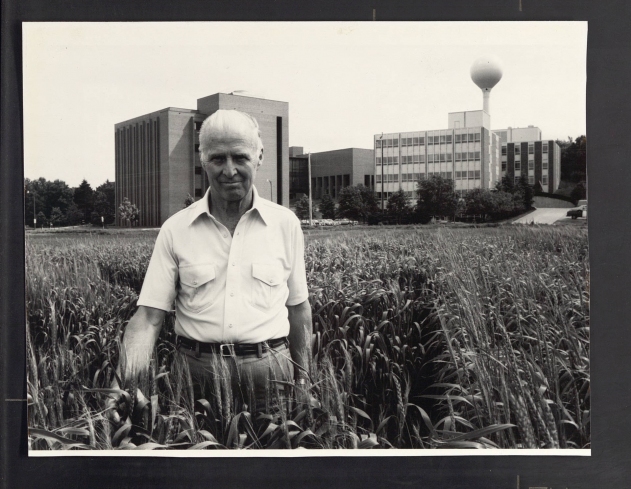
PBS’s The American Experience, in the new one-hour documentary THE MAN WHO TRIED TO FEED THE WORLD, tells the story of Nobel Peace Prize-winning scientist Norman Borlaug (1914-2009) who started the “Green Revolution”—feeding hundreds of millions of people through his crop-breeding techniques and unique agricultural system—while causing numerous unintended environmental and social consequences. The documentary also illuminates how governments have equated food insecurity with societal unrest throughout history.
THE MAN WHO TRIED TO FEED THE WORLD features Norman Borlaug’s biographer Leon Hesser, agronomists, and historians reflecting on his contributions to science and society. Borlaug began his career studying forestry as an undergraduate student and then went on to receive a graduate degree in plant pathology from the University of Minnesota, graduating at the start of World War II. At the time, the U.S. was worried about stability at its borders, particularly in the south, so the New York-based Rockefeller Foundation partnered with the U.S. government, with President Roosevelt in charge, to create an initiative with the Mexican government to raise farmers’ standards of living in the hopes of quelling any civil unrest. In 1944, Borlaug joined this effort and was tasked with studying the common stem rust fungus that was decimating wheat plants, harming crop yields.

Norman Borlaug, University of Minnesota Libraries, University Archives, Photo by Donald Breneman
Borlaug was a big believer in industrial agriculture (the first mass produced tractor was sold by Ford to farmers around the time that Borlaug was born, changing farming practices), and he wanted to produce resilient and fruitful crops. Through a process called shuttle breeding, which involved planting seeds in both California and Mexico so two crops could be harvested per year, Borlaug analyzed the resistance of different strains of wheat to stem rust, eventually breeding a new plant that was not only stem rust resistant, but had a very high yield. The caveat was that this crop needed about ten times the amount of fertilizer as well as a developed irrigation system for watering in order to grow, and this was beyond the budgets of the Mexican farmers Borlaug had been tasked with serving. However, with the Cold War beginning, governments saw another use for his project.
Fearing civil unrest in places such as China and India, the U.S. government gave more support to Borlaug’s research and began to disseminate his crop around the world. The biggest challenge presented itself in India, whose democratic government with a large rural population resisted Borlaug’s industry-heavy agricultural system. Widespread famine and fear of population booms eventually caused them to relent, and in 1968 their harvest with Borlaug’s crop broke all records for yield. The “Green Revolution” had begun, and Borlaug was given the Nobel Peace Prize two years later.
_Date_Created-_1953_-_1954__.jpg)
Borlaug's Notebook, Rockefeller Foundation, Oficina de Estudios Especiales. (Box 34, Folder 5), 1953 - 1954.
Despite Borlaug’s innovation, people still go hungry today; knowing there is enough food in the world to feed people makes it clear that underlying social structures—namely poverty and inequality—are responsible for limiting access to food.
THE MAN WHO TRIED TO FEED THE WORLD is available to watch in full on PBS.
PARTNERS
TOPICS